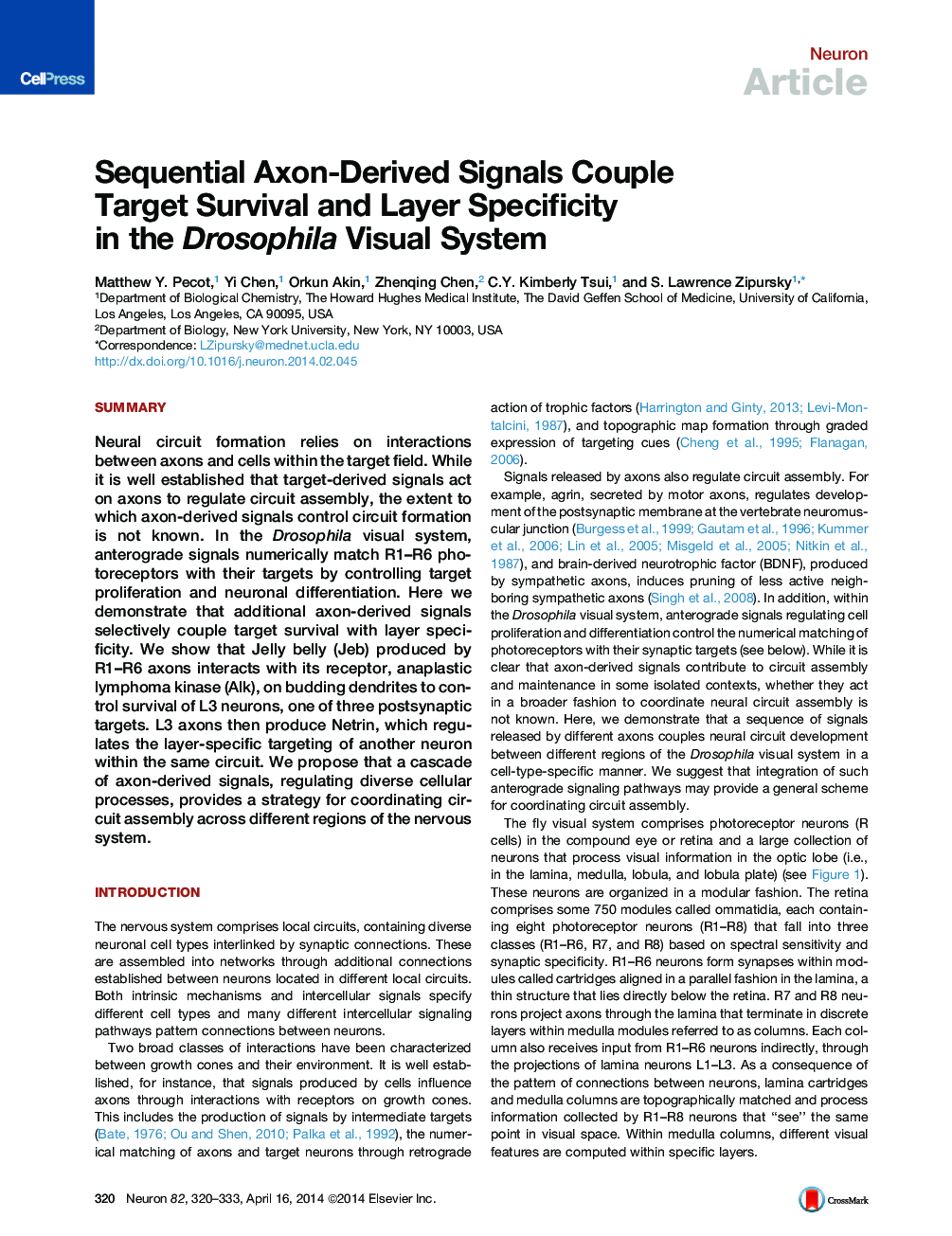| Article ID | Journal | Published Year | Pages | File Type |
|---|---|---|---|---|
| 4321132 | Neuron | 2014 | 14 Pages |
•Sequential axon-derived signals coordinate neural circuit assembly•Anterograde signaling controls target neuron survival in a cell-type-specific manner•Signaling through the anaplastic lymphoma kinase directly regulates neuronal survival•Neuronal death due to loss of Alk is reversed via caspase inhibition
SummaryNeural circuit formation relies on interactions between axons and cells within the target field. While it is well established that target-derived signals act on axons to regulate circuit assembly, the extent to which axon-derived signals control circuit formation is not known. In the Drosophila visual system, anterograde signals numerically match R1–R6 photoreceptors with their targets by controlling target proliferation and neuronal differentiation. Here we demonstrate that additional axon-derived signals selectively couple target survival with layer specificity. We show that Jelly belly (Jeb) produced by R1–R6 axons interacts with its receptor, anaplastic lymphoma kinase (Alk), on budding dendrites to control survival of L3 neurons, one of three postsynaptic targets. L3 axons then produce Netrin, which regulates the layer-specific targeting of another neuron within the same circuit. We propose that a cascade of axon-derived signals, regulating diverse cellular processes, provides a strategy for coordinating circuit assembly across different regions of the nervous system.
